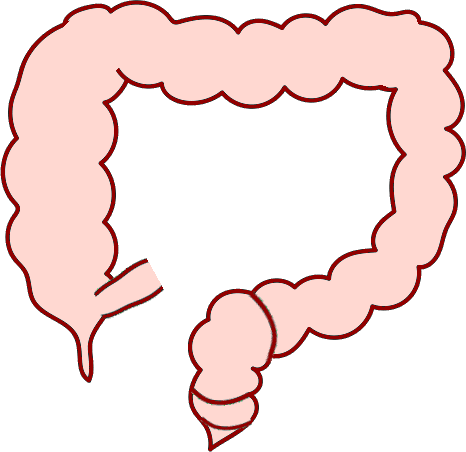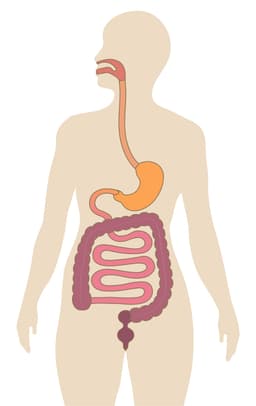Myths about teaching can hold you back
- Year 4
More about the journey of food
I can describe the final part of the journey of food through the human digestive system.
- Year 4
More about the journey of food
I can describe the final part of the journey of food through the human digestive system.
These resources were made for remote use during the pandemic, not classroom teaching.
Switch to our new teaching resources now - designed by teachers and leading subject experts, and tested in classrooms.
Lesson details
Key learning points
- From the stomach, food moves through the small intestine where digested nutrients are absorbed through the walls.
- Undigested food travels through the large intestine, where remaining water is removed.
- Waste food is stored as faeces in the rectum and leaves the body through the anus.
- Models can be used to demonstrate and explain things that we are not able to see or experience for ourselves.
Keywords
Intestine - The intestine is a long tube that is split into the small and large intestine, through which food travels from the stomach and out of the body while it is being digested.
Nutrients - Nutrients are important substances that living things use to stay alive and healthy. Animals take in nutrients from their food.
Rectum - The rectum is the end part of the large intestine that holds faeces before it leaves the body through the anus.
Faeces - Animals make solid waste in the form of faeces.
Anus - The anus is the hole at the end of the digestive system through which solid waste is pushed out.
Common misconception
Pupils may think that all the food we eat is used by the body.
When pupils model the lower part of the digestive system they will see some of the food is absorbed as nutrients and other parts form waste which leaves the body.
To help you plan your year 4 science lesson on: More about the journey of food, download all teaching resources for free and adapt to suit your pupils' needs...
To help you plan your year 4 science lesson on: More about the journey of food, download all teaching resources for free and adapt to suit your pupils' needs.
The starter quiz will activate and check your pupils' prior knowledge, with versions available both with and without answers in PDF format.
We use learning cycles to break down learning into key concepts or ideas linked to the learning outcome. Each learning cycle features explanations with checks for understanding and practice tasks with feedback. All of this is found in our slide decks, ready for you to download and edit. The practice tasks are also available as printable worksheets and some lessons have additional materials with extra material you might need for teaching the lesson.
The assessment exit quiz will test your pupils' understanding of the key learning points.
Our video is a tool for planning, showing how other teachers might teach the lesson, offering helpful tips, modelled explanations and inspiration for your own delivery in the classroom. Plus, you can set it as homework or revision for pupils and keep their learning on track by sharing an online pupil version of this lesson.
Explore more key stage 2 science lessons from the Introduction to the human digestive system unit, dive into the full primary science curriculum, or learn more about lesson planning.

Equipment
See additional materials.
Content guidance
- Risk assessment required - equipment
Supervision
Adult supervision required
Licence
Prior knowledge starter quiz
6 Questions
Q1.Humans need food and to survive and stay healthy.
Q2.Which of these parts of the body are involved with digestion?
Q3.Where does digestion start?
Q4.Which liquid aids digestion in the mouth?
Q5.Put the first part of the digestive system in the correct order.
Q6.What helps to break down food in the stomach?
Assessment exit quiz
6 Questions
Q1.The digestive system starts in your mouth and ends at your as it leaves the body into the toilet.
Q2.Which of these are absorbed from food through the walls of the small intestine?
Q3.The intestine removes water and forms the undigested food we do not need into faeces.

Q4.Starting with mouth, put all the body parts involved with digestion in the correct order to show the journey of food through the body.
Q5.Match the part of the digestive system to its function.

absorbs nutrients from food
removes water from waste food and forms faeces
stores waste food as faeces
pushes out the faeces from the body


